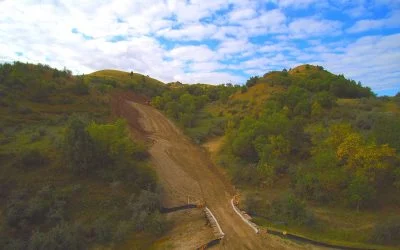How does soil movement impact pipeline and right-of-way integrity? Traditional integrity management focuses on the pipeline, but a pipeline integrity also depends on the stability of its environment. A pipeline that is structurally sound but buried in a hill slope at risk for mass soil movement is not safe.
Earth movement puts strain on a pipeline and can cause a rupture or failure. These ruptures or failures then result in environmental damage and loss in throughput. A May 2019 PHMSA bulletin highlights steps that address the integrity of the areas surrounding the pipeline that may be prone to earth movement. These areas and other zones with geohazard threats are at a higher risk for future incidents.
One of the common challenges with earth movement is landslides. There are two different types of landslides, also referred to as slips: translational and rotational. Translational slips are what you think of when you imagine a landslide, an incident when the whole hillside falls down and there is a massive flow of dirt coming off of the hillside. A rotational slip is when a bowl forms underneath the ground and the dirt moves below the surface in a circular motion. The soil rotates instead of falling off the hillside, which means it is less obvious that a slip is in progress. Since the change and movement is not clear to the naked eye, it’s very difficult to identify rotational slips until they are fully underway. Continuous monitoring is one way to identify the subtle changes that indicate more happening beneath the surface.
Several conditions create rotational slips. In Appalachia heavy forestation and steep slopes are a challenge, but the soil also contributes to rotational slips. The soil there is based in clay, which tends to soak up water. Whenever water accumulates, it creates movement on and off the right-of-way, and can create serious risks for pipeline and right-of-way integrity. When there is a risk, being able to direct resources where they matter most has the greatest impact. To do that you need to know where to go, quickly. In both routine monitoring and incident response, timely information is key.
Soil movement, among other changes, can be detected before it begins to impact pipeline movement, but only with routine flights to monitor gradual change and analytic models to interpret the data. Mitigation efforts are much more effective and efficient if they start at the outset of environmental change, instead of after significant impact has already occurred. Given the right information at the right time, operators and contractors can mitigate these issues without a pipeline shutdown.
Timely delivery has been a challenge with data in the pipeline industry. If the data is collected but the report arrives 30 days later, how can that be helpful? A lot can happen in a month, and the delay with reporting combined with the volume of data and the lack of sufficient models to analyze and interpret it has left many without the insights they need to inform their decisions.
If you’re a decision-maker, and you’re responsible for a five-state region, how much time do you actually have to make decisions? There certainly isn’t time to go over a spreadsheet with thousands of entries and identify which ones are the highest priority. The team at SolSpec is focused on providing timely, actionable data, and scalable solutions that make it possible for a client to fly today and have the answer in the morning.


